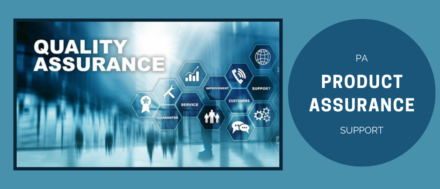
Importance of Alert and Obsolescence Management on Space Projects
- Posted by Manuel Sánchez Ruiz
- On February 25, 2022
- 0
As we have previously commented on various posts, the Space environment is a challenge for the performance of EEE parts. Extreme temperature conditions, vacuum and radiation environment needs specific testing and use of materials on those components foreseen to be used on Space market.
Because of this, the redundancy of designs that have proven their strength and suitability is common. Being a side effect of this the need for strong support of manufacturers to the parts selected and procured over a long period.
Due to this criticality, two tasks that are part of PA Support are revealed as the key to succeeding on procurement of EEE parts for Space projects: Alert Management & Obsolescence Management.
The first one deals with the task of identifying the parts that are included in a DCL by the user which are affected by an alert. Alerts are notifications of problems or non-conformances that can be issued by a Space Agency, by the parts’ manufacturer or even by parts’ user informing of the problem and often providing solutions/workarounds, ways to proceed by users and corrective actions taken by manufacturers.
The early identification of parts affected by an alert is important to avoid the use of that part in the design if an alternative is available. In the case the part has already been procured, it is important to know about the alert to see which solutions are available or the specific impact of the alert on our application.
There exist some important Alert Systems as the ESA one, active and being updated continuously. Also, CNES (Centre National D’Études Spatiales) has its own system, with an extensive database. On the USA side, the GIDEP (Government-Industry Data Exchange Program) Alert System provides NASA with a database of Alerts from USA manufacturers. On another vein, some of the main manufacturers of components for the Space market have their own databases in relation to the parts they produce.
The later deals with the identification of those parts listed on a DCL which are obsolete or under an obsolescence scheme at the time of procurement phase of the project; this is, that manufacturer has stopped to manufactured them has plans to do so. The importance of this early identification is clear: to avoid facing a samples shortage in the middle of the project. This way, the parts in question can be substituted by an alternative or in case this is not possible, a high volume of samples can be procured in advance to account for possible issues.
Obsolescence critical aspects rely on the fact that when it is difficult to substitute a component if the design has been already approved, especially if, for example, EM parts have been already procured. This risk is higher when talking about COTS parts, where it is usually needed a high number of samples for evaluation and failure is more common due to a lower control from the production line at the manufacturer.
Focusing on the general aspects, not all manufacturers have a PCN (Parts Change Notification) system or it is not accessible for everyone, which stands as a barrier to the Obsolescence and Alert Management for Users. While it is mandatory for manufacturers of qualified components to inform the community of any incidence affecting their parts, it is not so for commercial level parts, often used for NEW SPACE programs. Even if these notifications on COTS and automotive parts are becoming more common with the inclusion of these components on NEW SPACE markets, it is still difficult to track these changes on many cases.
Being aware of the complexity of having an exhaustive control on manufacturers’ notifications, it is important to have an up-to-date components database in which these notifications are gathered to allow informing the users.
Read More related posts
- Platinum Temperature Sensors Solderability Issues - May 27, 2022
- Importance of Alert and Obsolescence Management on Space Projects - February 25, 2022
- What is a PoL converter and when should I use it - November 16, 2021








0 comments on Importance of Alert and Obsolescence Management on Space Projects